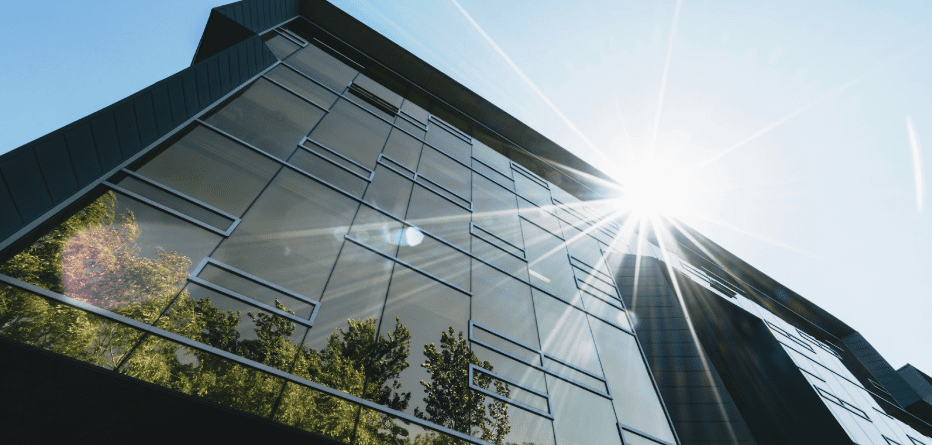What Are The Key Considerations For Designing Energy-efficient Buildings?

Designing energy efficient buildings requires a great deal of attention and expertise. With today's increasing awareness of environmental issues and consumers' desire for eco-friendly applications, energy-efficient building design is no longer optional, but necessary. With that in mind, here are a few tips for those looking to design energy-efficient buildings:
1. Take advantage of natural light
One of the easiest ways to increase energy efficiency in a building is to take advantage of natural light. Not only does this cut down on energy usage and utility bills, but it's also more beneficial to occupants' health and well-being. Incorporating windows and glazing can help facilitate natural light throughout the space.
2. Use energy-efficient lighting
When it comes to lighting, energy-efficient choices are key. LEDs, fluorescent bulbs, and other forms of energy-saving lighting can significantly reduce energy consumption and costs.
3. Utilize passive cooling and heating in the building's design
Passive cooling and heating systems are another crucial element to energy-efficient building design. The placement of windows, shading, building orientation, and insulation can all help regulate temperatures and reduce energy consumption. Passive systems can help maintain a comfortable temperature without the need for additional energy consumption.
4. Incorporate greenery into the structure
Using plants, trees, and other greenery not only adds to the aesthetic appeal of a structure but can also aid in regulating temperature and indoor air quality. These natural elements can help reduce the carbon footprint of the building and create a more sustainable environment.
5. Properly seal and insulate the building
Proper insulation can make a significant impact on energy consumption. By sealing leaks and installing the proper insulation types and thickness, energy costs can be reduced significantly. This helps keep the building cooler in the summer and warmer in the winter and reduces the required use of heating and cooling systems. It is an essential element in energy-efficient building design.
6. Use energy-efficient HVAC systems
Heating, ventilation, and air conditioning systems (HVAC) can be a significant factor in energy efficiency. By using high-efficiency HVAC systems, including heat pumps, and incorporating smart thermostats, energy usage can be reduced significantly.
7. Minimize the use of VOCs (Volatile Organic Compounds)
Volatile Organic Compounds (VOCs) are harmful chemicals found in many materials commonly used in building. Products like paints, adhesives, and cleaning materials can all contribute to indoor air pollution. By minimizing the use of VOCs, occupants' health can be protected and energy consumption reduced.
8. Incorporate renewable energy sources
Finally, incorporating renewable energy sources like solar panels or wind turbines can make a significant impact on energy consumption and sustainability. Not only do these systems reduce the need for traditional energy sources, but they also can generate income through incentive programs for excess electricity production.
FAQ
What are some additional benefits of energy-efficient building design?
Energy-efficient building design not only reduces energy consumption and costs, but it can also improve indoor air quality, enhance occupant comfort and productivity, and reduce the carbon footprint of the building. It provides a sustainable environment for occupants and contributes to a greener future for all.
What is the cost-effectiveness of energy-efficient building design?
While upfront costs may be slightly higher than traditional building methods, energy-efficient building design is a smart long-term investment. Utility bills are reduced, and the value of the building increases through its increased efficiency and sustainability. The environmental and health benefits of energy-efficient building design also make it a more cost-effective option in the long run.
Can energy-efficient building design be applied to any structure?
Yes! From small residential buildings to large commercial developments, energy-efficient design is possible in any structure. With the proper expertise and attention to detail, any structure can be designed to be energy-efficient, promoting sustainability and eco-friendliness.
In conclusion, energy-efficient building design is an essential element in creating a sustainable future. By taking advantage of natural light, using energy-efficient lighting, utilizing passive cooling and heating, incorporating greenery, properly sealing and insulating the building, using energy-efficient HVAC systems, minimizing the use of VOCs, and incorporating renewable energy sources, energy consumption can be significantly reduced, creating a healthier environment for occupants and contributing to a greener planet for all.



Post a Comment for "What Are The Key Considerations For Designing Energy-efficient Buildings?"